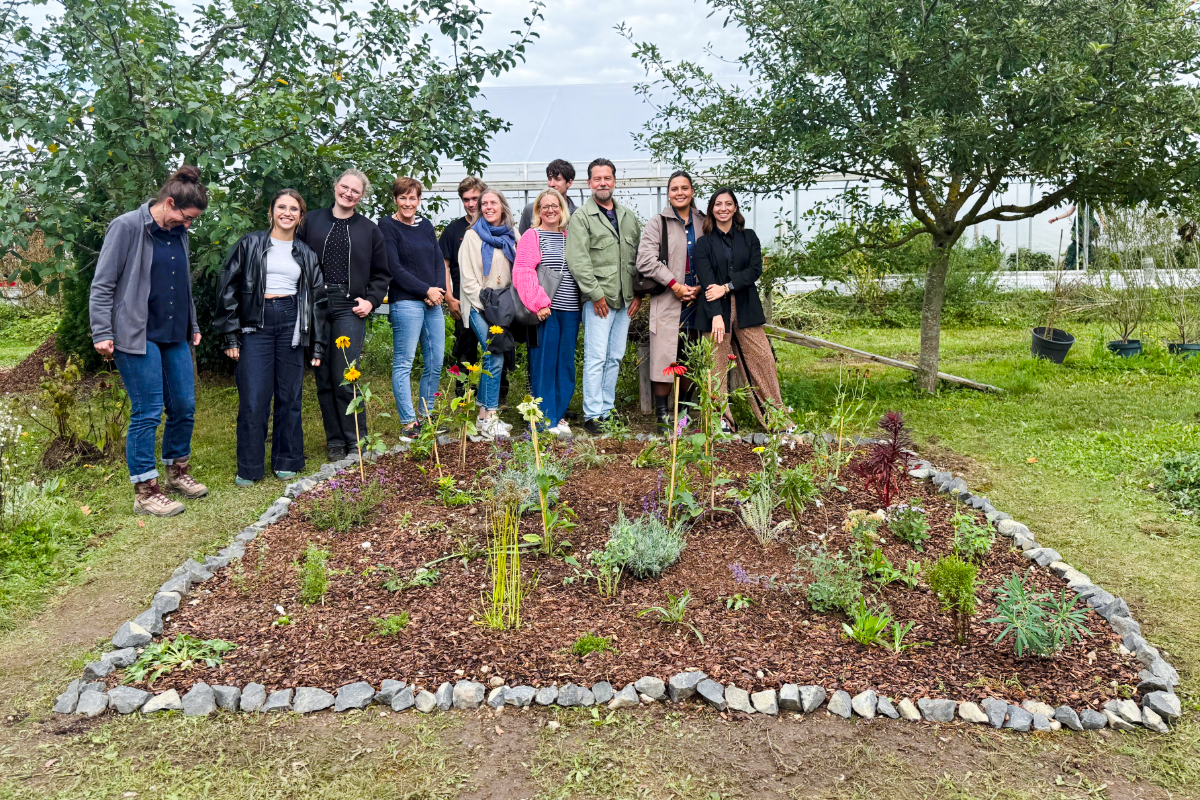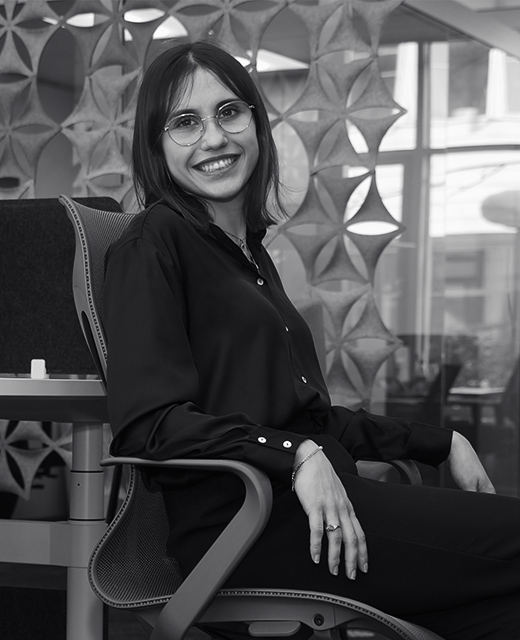Participation affects us all, and that was precisely the focus of our Social Day.
Last week, we visited the Hollern nursery in Unterschleißheim, which belongs to the Augustinum Group. We have been working with Augustinum for years, primarily in the area of office greening. Many of the plants you see in our projects today—from large plant troughs to smaller office concepts—were implemented by the nursery.
This made it all the more exciting to spend a whole day on site, getting to know the people and gaining insights into how they work there.
The Augustinum and the workshops
The Augustinum is much more than just a workshop. In addition to schools, clinics, and retirement homes, there are workshops here that provide people with disabilities with work, structure, and participation. And not only within the workshops, but also with the aim of creating transitions into the general labor market.
There are various models for this—short internships, outsourced jobs, or the budget for work. What impressed us was that this is not about “employment,” but about work that has meaning and shows that everyone can contribute something.
With Linda trough the groups
Linda Beder accompanied us throughout the day. Right at the beginning, she explained to us what the Augustinum does and how the Hollern nursery is organized. Then we went through the different groups together. We saw how varied the tasks are: planting, tending, and harvesting outside, and smaller tasks inside such as planting cress trays or cleaning vegetables. Everything was individually tailored to each person’s abilities. And you could immediately sense that every contribution counts and makes the community complete.
Beekeeping tour with Edward Obika
The tour with beekeeper Edward Obika was a real highlight. He didn’t just show us a beehive, he really took his time. We learned how a colony is structured, what tasks there are, how nectar is turned into honey, and why biodiversity is so important. It was particularly exciting to see how much bees also influence their environment: flowering areas become more valuable, diversity increases—and this is exactly what can be achieved in an office environment with small areas or flowering islands.
Of course, we also tasted honey – such as chestnut and buckwheat. Two completely different flavors that show how much location and blossom change the product. And the best part: many clients joined us, listened in, and asked questions. It wasn’t a lecture “for us,” but a shared experience. We all learned something – and the topic sticks.
Lunch from the workshop kitchen
At lunchtime, we enjoyed a meal from the workshop kitchen: sandwiches, small snacks, freshly prepared and lovingly served. It wasn’t a big meal, but it was just right—with attention to detail. For us, it was a nice break where we could chat and enjoy the atmosphere.

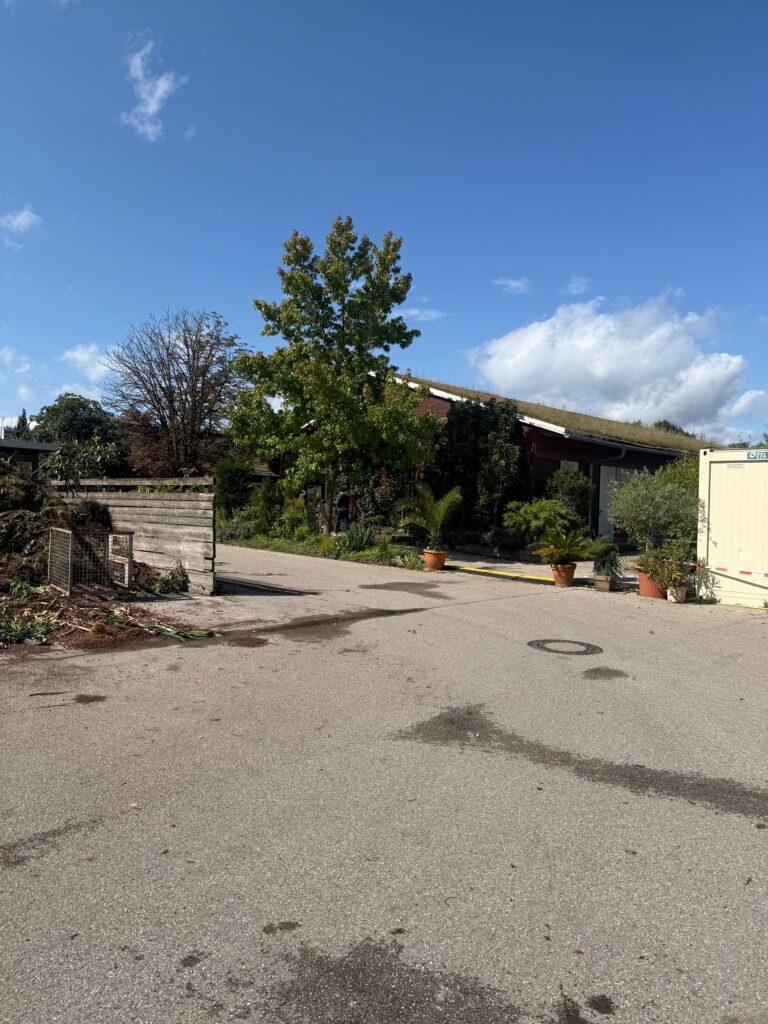
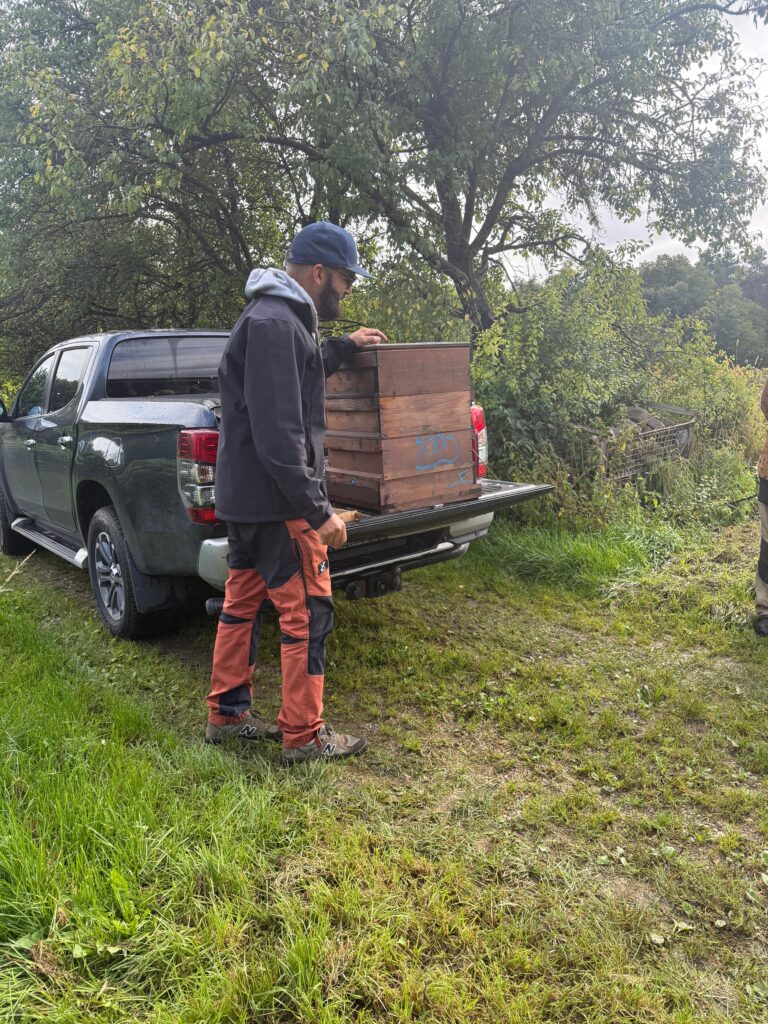
Creating the flower meadow together
After lunch, we got stuck in ourselves: together with the clients, we created a flower meadow for the bees. The gardening group had selected the plants and prepared the area. Then we got started: loosening the soil, planting the plants, digging them in. The clients showed us how to do it properly, and we worked side by side.
In the end, it wasn’t just a flower bed, but truly our meadow. What makes it special is that it continues to grow. We receive regular photos and updates so we can follow how everything is developing. For us, this symbolizes what cooperation means: creating something that lasts.
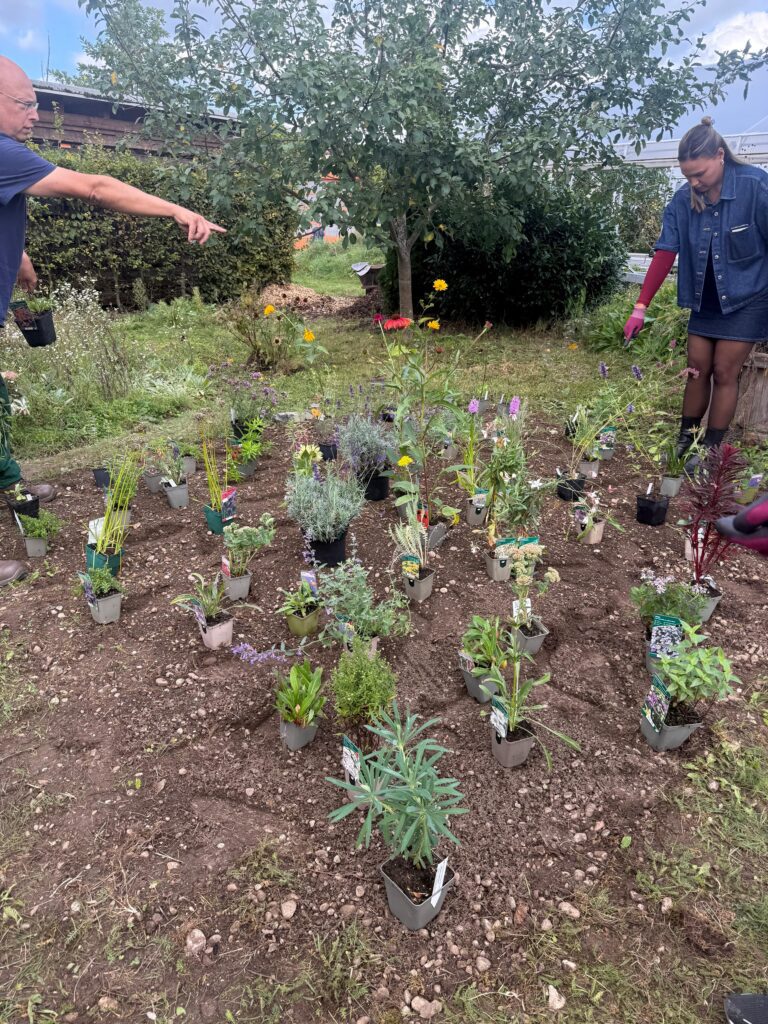
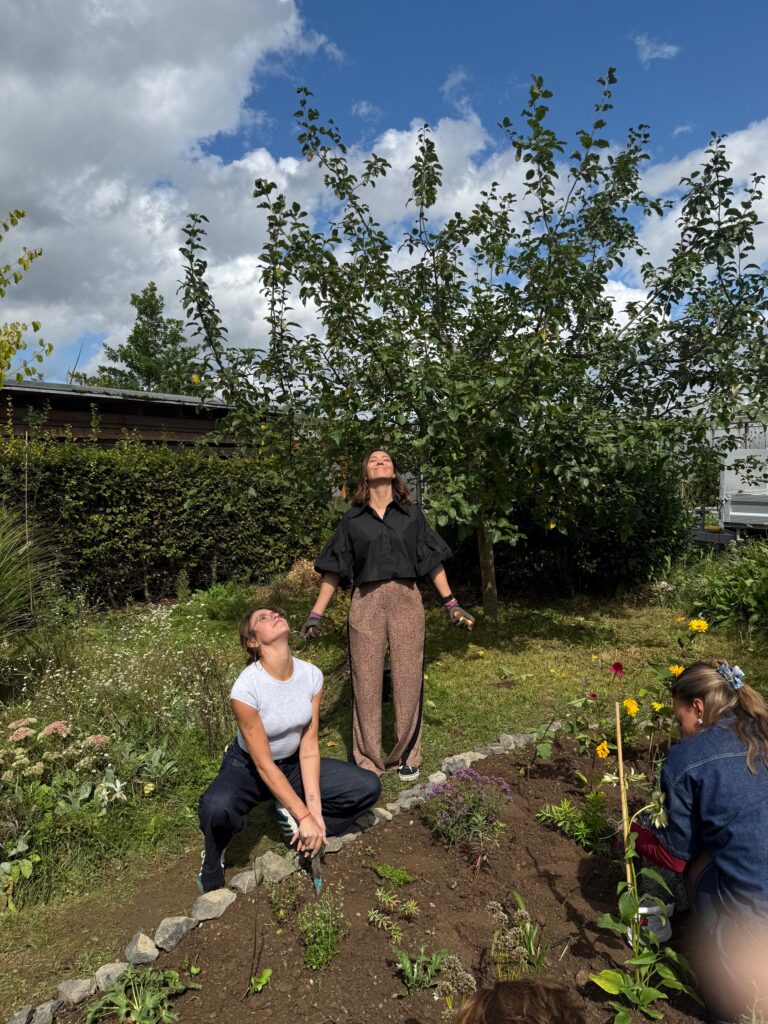
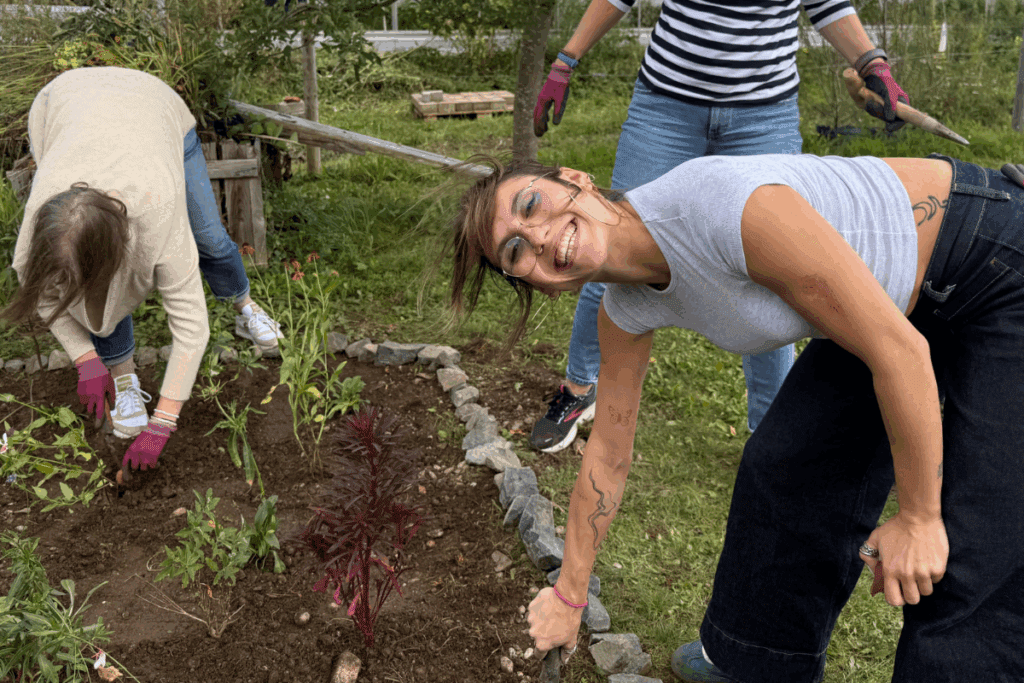
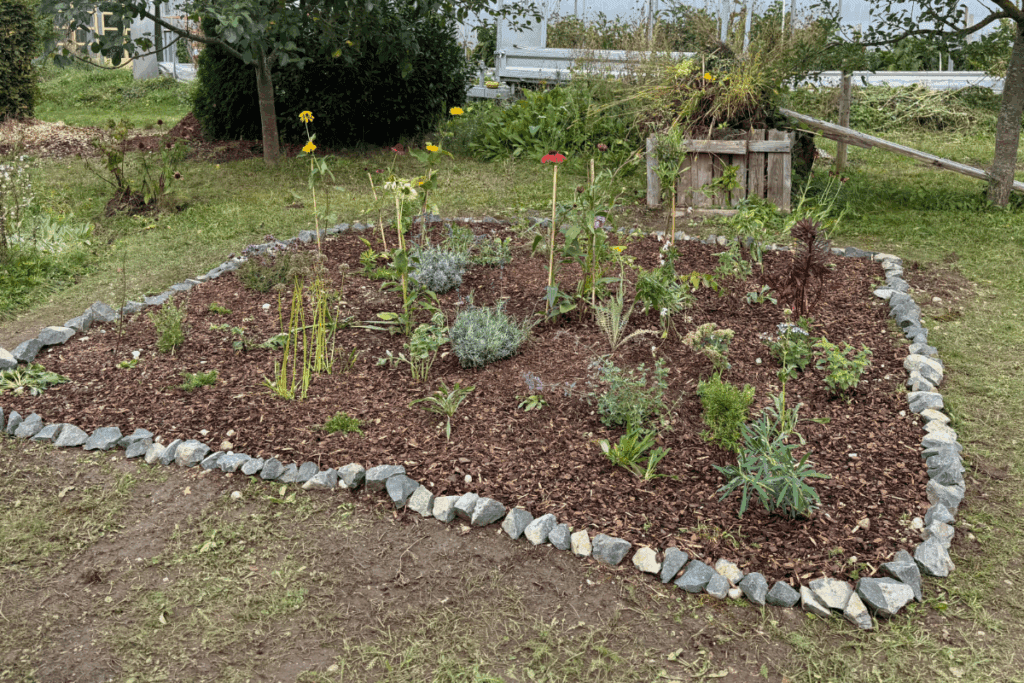
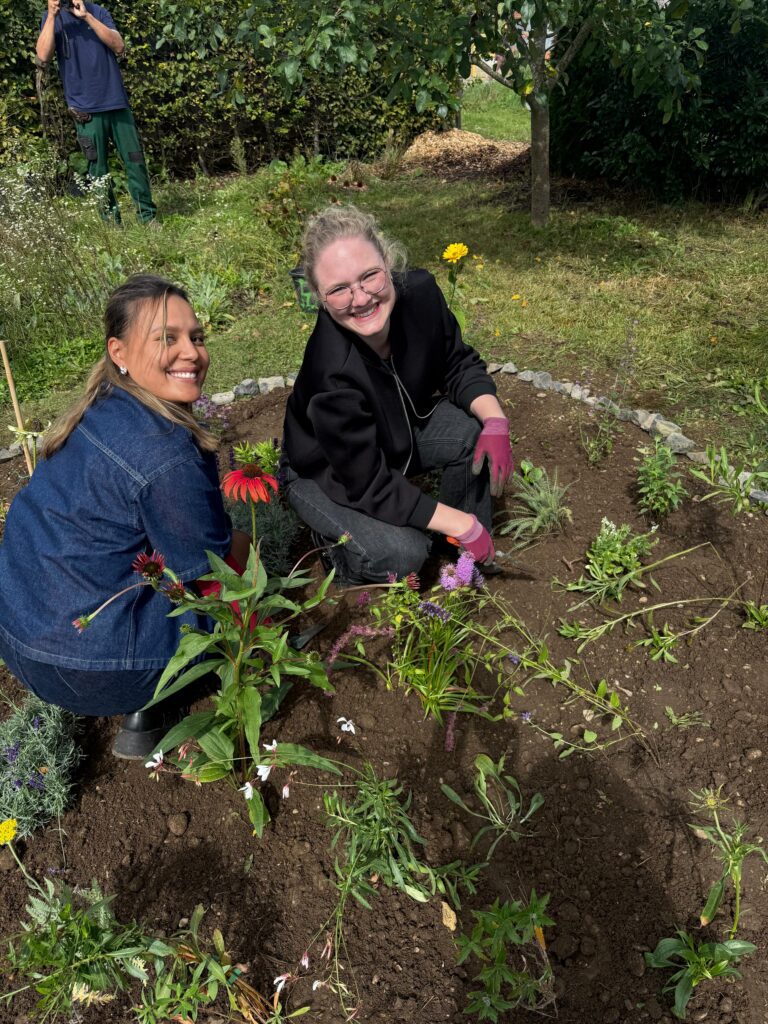
Inclusion in design – a discussion that continues
In the afternoon, the topic was inclusion in design, presented by Christiane Zhu-Lambrecht. For us, this was a really valuable point.
Right at the start, we learned that most disabilities are not congenital, but arise due to age or injury. In principle, this affects all of us at some point. Visual impairment, hearing loss, limited mobility – these are all issues that can arise in everyday office life.
We then sat down in groups and considered: What obstacles are there?
- For visual impairments, for example: illegible signs, insufficient contrast, glare. Solutions would be larger fonts, clear pictograms, better lighting.
- For hearing impairments: echoing rooms, poor acoustics. Solutions: absorbers, carpets, zoning.
- For mobility: paths that are too narrow, counters that are too high. Solutions: more space to move around, height-adjustable tables, wheelchair-accessible kitchens.
The exciting thing is that every solution that breaks down barriers makes the office better for everyone. That was the core message—inclusion is not an extra, but simply good planning. It wasn’t dry theory, but a real exchange in which we realized that we could take a lot away from it and incorporate it into our projects.
Second round of gardening—vegetables, plants, office
Finally, we took another tour of the garden center. We saw fresh vegetables that are sold at markets and many plants that we know directly from our projects. This is where everything is prepared that will later be displayed in our customers’ offices or reception areas. But the Hollern nursery doesn’t just deliver, it also provides us with long-term support: with advice, regular maintenance, and special solutions such as plant troughs that can be customized individually
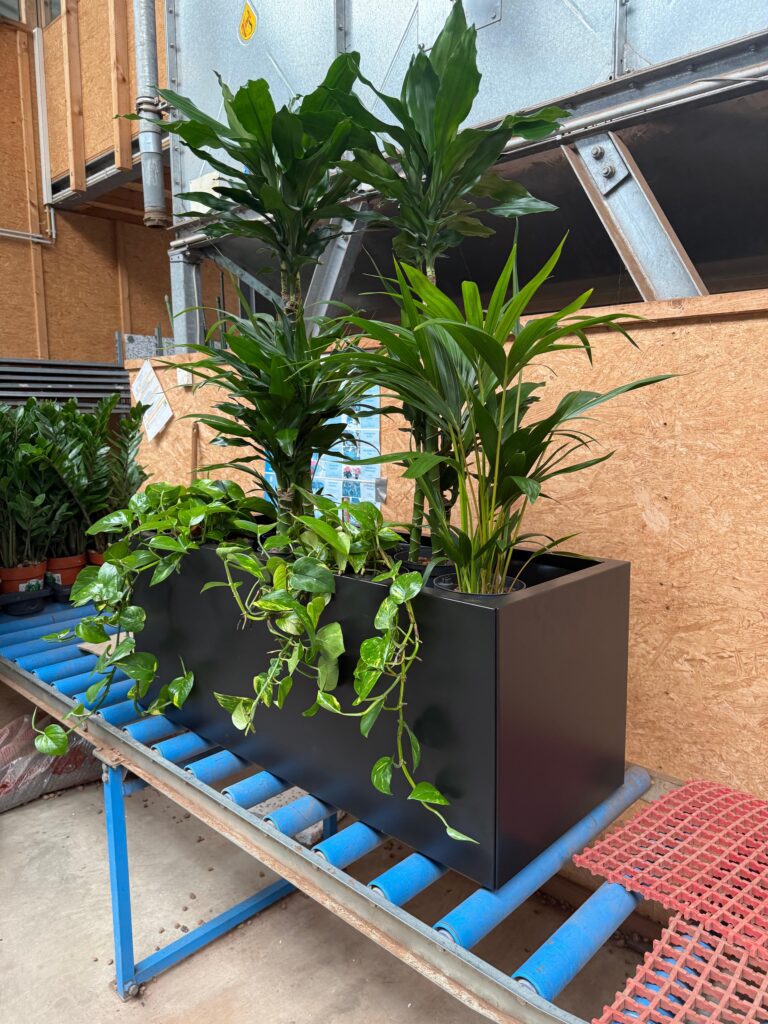

Visit to the residential home
Finally, we were given a tour of the Augustinum residential home. The building was designed to be completely barrier-free, with a clear structure, plenty of light, and open communal areas. It was impressive to see how accessibility is taken for granted here and how architecture can enable participation.
Thank you to Linda Beder, Edward Obika, and the entire team, as well as clients from the Hollern nursery and Augustinum for their openness and hospitality.
For us, it was a day full of impressions – and one that will stay with us.
You can get a better impression in our reel on Instagram @hauseroffice.
Best regards,
Giulia
